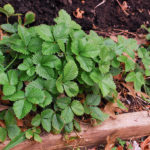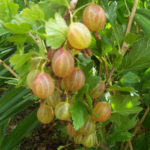Aubrieta: planting and care
Unpretentious perennials occupy a special place in landscape design. One of these plants is aubrieta, or aubretia. Her bright floral carpets will be a real decoration for almost any garden.
Botanical description
Aubrieta is a perennial ground cover plant from the Cabbage family. This culture comes from southern Europe. It is characterized by evergreen creeping stems with alternately arranged leaves. The color of flowers can be pink, white or purple.
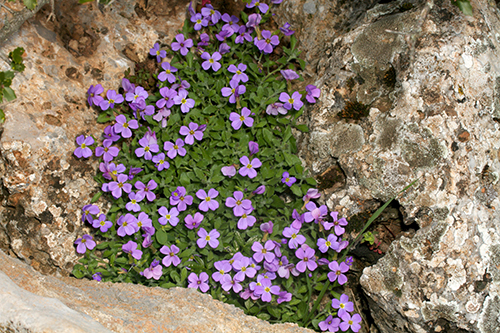
The plant got its name in honor of the artist from France Claude Aubrie. Aubrieta is widely used for landscaping gardens throughout Europe. In its natural form, it is found on mountain slopes and rocky river banks.
The flowering period of the Abrite falls in the spring; with good care, it blooms again in early autumn. The creeping shoots of this perennial form dense clumps, which are very densely covered with flowers during the spring flowering period. Their size does not exceed 1 cm. At the moment, in addition to small-flowered varieties, large-flowered and terry forms of garden aubriet have been bred.
The main advantage of Aubrieta, as a garden culture, lies in its ability to winter while preserving the leaves. Immediately after the snow melts, its clumps of gray color look very, very advantageous. They retain their rich color from spring to late autumn.
Types of aubriets
There are 12 types of obriety in total. But in floriculture, only the following are most widely used.
Aubrieta cultural... This species is characterized by neat curtains, up to 20 cm high. Flowering begins in May and lasts about 40 days. Breeding of this species has been going on for a very long time. The old varieties of the Aubrieta cultural are still used in floriculture. They are appreciated for their very strong branching, which creates a carpet effect and profuse flowering. The most common varieties of this species are listed below:

'Argenteo-variegata' (Argenteo-variegata)... The main difference of the variety is the variegated color of the leaves. White spots are located along their edges and surfaces.
'Barkers Double' (Barkers Double)... It is prized for its bright pink double flowers.
'Gerdjdike' (Gurgedyke)... A widespread variety with large, deep purple flowers.
Aubrieta deltoid... The species is native to the Balkan Peninsula and Greece. The height of the plants does not exceed 15 cm. The flowering period occurs in May and lasts on average for a month. Most varieties and hybrids of Aubriet originated from this particular species. Its distinctive feature is strongly dissected leaves and multi-flowered inflorescences. This species also has another variety - Bougainville Aubriet.
Aubrieta graceful... One of the most beautiful views. Its height does not exceed 10 cm. This species is characterized by thinner, strongly outstretched shoots and small flowers with a sac-like calyx.
Aubrieta Columka... The species is up to 12 cm high. It has the ability to form strongly spreading sod. It is valued for large flowers up to 5 cm in size, light purple in color.
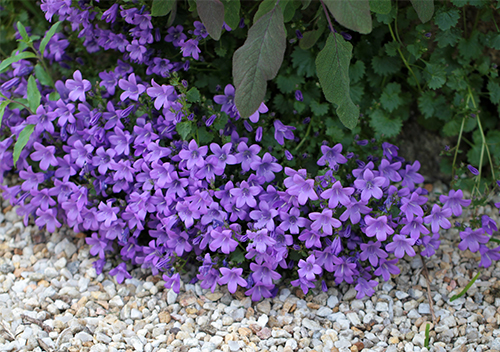
Aubrieta Kroatskaya... This species can be distinguished by its obovate leaves. Peduncles practically do not rise above the level of leaves.
Growing Aubriets from seeds
Like most crops, Aubrieta can be propagated by seed and vegetative means. The seed method usually does not convey varietal characteristics, but it allows you to get a large number of plants. The variety retains vegetative propagation, but it is more troublesome.
Obrieta seeds can be purchased at specialized stores and garden centers. Also, if you wish, you can assemble them yourself. To do this, after a wave of spring flowering, shoots with set fruits are left on several plants. When the pods begin to ripen, and you can tell by the seeds (they turn brown), they should be harvested. It is very important not to be late here.When fully ripe, the pods will crack and the seeds will scatter in all directions.
Sowing is started in late autumn or early spring. For this, seedling beds are prepared with a loose nutritious soil. The seeding depth should not exceed 0.5 cm. When sowing in spring, seedlings appear in 2 - 3 weeks. At this point, they are very thin and weak, so it is recommended to mulch them with clean river sand. Plants grown from seeds will bloom only the next year.
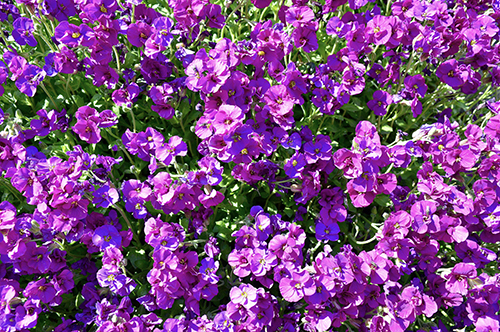
Vegetative propagation
Aubrieta can also be propagated vegetatively, using cuttings. To do this, the shoots remaining after the spring pruning are not thrown away, but used for planting in a cuttings.
A cuticle is a small greenhouse where a mixture of humus and clean river sand is used as soil. It usually takes no more than 2 weeks for rooting. By the end of summer, the planted cuttings turn into young bushes, which can already be transplanted to a permanent place.
By dividing the bush, aubrieta is rarely propagated. As a rule, this breeding method is used only in emergency situations. For example, if it urgently needs to be moved to a new location. Aubriets, especially varietal ones, tolerate division very poorly, therefore, when performing it, you need to act extremely carefully.
Choosing a landing site
Aubriet can be planted in rocky flower beds, on alpine slides, slopes and retaining walls. The main thing is that the chosen place is sunny enough. In the shade, the shoots of this plant are strongly elongated, and flowering becomes weak or absent altogether. In general, as a culture, Aubriet is best suited for regions with moderately hot summers.
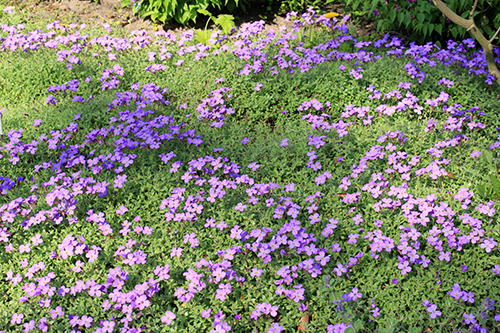
Moderately fertile soils with little lime or chalk are preferred for it. Highly fertile soils, as well as waterlogged clay soils, are absolutely not suitable for growing this perennial. Excess moisture for aubrietta is especially dangerous in the spring-winter period. That is why it is better to plant it on slides or soils with good drainage.
Shaving care
Shaving care has its own characteristics. Although she is not demanding on growing conditions, a number of conditions will still have to be met to obtain lush-flowering bushes.
Watering this plant is required only in case of severe drought. The rest of the time, natural precipitation is enough for her. Regular watering is required only for young plantings.
Timely weeding is very important for her. Weeds growing through its curtains injure its superficial root system, which usually leads to freezing in winter.
Regular fertilization is not required for this plant. Nitrogen fertilizers act especially negatively on it. They lead to excessive growth of green mass, preventing flowering. When growing this ground cover, you can only use fertilizers of the phosphorus-potassium group or humate.
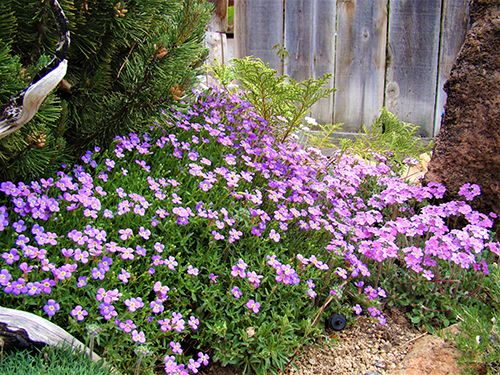
The first ones are submitted in two terms. The first time feeding is carried out in the spring, the second time after pruning. Humate can be used throughout the growing season. For a plant, it is a source of essential trace elements. The main purpose of using phosphorus-potassium fertilizers when growing aubrieta is to stimulate more abundant flowering.
Aubrieta responds very well to sand mulching. Depending on the type of soil, it is carried out 2 to 3 times per season. At the same time, a sandy layer with a thickness of at least 3 - 5 cm is created on the soil surface.
After spring flowering, the aubriet must be cut off. This agrotechnical technique stimulates the development of new shoots, which will give a second wave of flowering in the fall. Pruning is carried out at a height of 2 - 3 cm from the soil surface.
Usually, Aubrieta is quite winter-hardy, but in some winters with little snow or with late return frosts, it can freeze slightly. To prevent this, it is recommended to cover the plant. For this, you can use a non-woven covering material or spruce branches. In this case, the shelter should not be too dense and thick, otherwise the plant may vanish.
Use in landscape design

When drawing up landscape compositions, the aubriet is planted on alpine hills and rocky slopes. It also looks good in the front of the curb. It can also be used for planting in a mixborder, but at the same time it is necessary to ensure that it is not oppressed by larger plants.
The creeping shoots of Abris can form spectacular cascades, so it is very beneficial to use it to decorate the edges of walls or slopes. It is also used to fill flower beds with primroses. Its flowering begins immediately after their flowering, which allows you to close empty places.
At the moment, Aubriet is rarely used in landscape design. This is due to certain difficulties in leaving. After planting, it requires timely and proper care. You will not be able to forget about her.
Plants such as Iberis, Alyssum, and styloid phlox can be used as partners for Arieta. It goes well with other ground cover plants, especially if they have a contrasting color.
Anyone can grow shaved on their site. The next year after sowing, it will bloom, forming spectacular clumps. Subsequently, with proper care, it will delight the eye for many years and effectively decorate landscape compositions.

